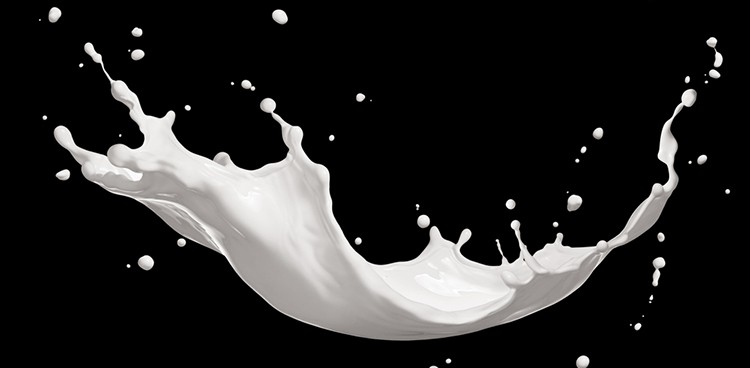
As anyone who has tried the cheese from different kinds of animal milk will know, there’s a big difference between eating cheddar from a cow and fresh chèvre. There is a flavor in goat cheese that most people can only describe as “goaty.” Why is that? What do the cheeses of cow, goat, and sheep’s milk taste like and why do they taste differently in the first place?
The answer is, it depends. The differences have to do with diet; age of the cheese; breed of cow, goat, or sheep; and the production process of the cheese. In the interest of saving time, we’ll do a quick and general breakdown of the differences in milk between cows, goats, and sheep and how it contributes to these differences.
Cows

For anyone in the US, cows are the default source for our milk and cheese. Cows typically eat ground cover grasses and sometimes take up soil with the grass, which can lead to their cheese having an earthier flavor. Of course, that earthy flavor will vary depending on the nature of the soil. Cows also digest differently than goats and sheep. The fat molecules in cow’s milk are larger, which makes cow’s milk cheese harder for people to digest than cheese from goats and sheep. For this reason, you probably want to steer clear from cow’s milk cheese if you are lactose intolerant. Cow’s milk and goat’s milk both have about the same levels of protein and fat, but because of the difference in the structure of the fat, cow’s milk cheese feels heavier in the mouth than goat cheese.
Cow’s milk is versatile and can be made into a lot of different cheeses. I like to think of cow’s milk as a sort of magician, able to put on many masks but often disguising its true flavor behind the flavor and intent of the cheese. Unlike goat and sheep cheeses, which can put people off or be considered an “acquired taste,” cow’s milk cheeses don’t have a distinctive or off-putting tang.
Goats

Goats have strong stomachs and like to eat plants that cows avoid, like brambles and thorny grasses. Their milk picks up these acrid flavors, which will transfer to their cheese. Other important factors that can affect the taste of goat’s milk is the nanny goat’s hormone levels. If she is kept near the male bucks, her hormone levels will rise, which can give the milk a barnyard taste. The goat milk’s age is also important—the fresher the better. America’s Test Kitchen explains why:
Producers either milk their own goats or source the milk from nearby farms and use it within a few days of milking. Freezing the milk is not a desirable option. The sharp drop and then spike in temperature when the milk is defrosted damages the membrane protecting the milk fat from the lipase enzyme, which in turn releases three fatty acids: capric, caproic, and caprylic. While a moderate amount of these fatty acids is desirable—they give goat cheese its characteristic tangy flavor—too much is a bad thing.
The fat molecules in goat’s milk are small and the curds produced from it are smaller and softer than curds from cow’s milk or sheep’s milk, so goat’s milk cheese is the easiest to digest of the three. Goat cheese should taste bright and somewhat acidic with a signature tang. Goat’s milk cheese is also lighter in the mouth and less sweet than cow’s milk cheese. As goat cheese ages, the tanginess gives way more creamy and earthy flavors.
Sheep

Sheep’s milk is significantly higher in fat and protein that cow or goat’s milk. On average, sheep’s milk is 7.4 percent butterfat as opposed to the 3.7 percent for cows and 3.6 percent for goats*. These higher levels of fat and protein mean that sheep’s milk has the most solid content, so it takes less sheep’s milk to make cheese than either cow’s or goat’s milk. The high butterfat content in sheep’s milk means sheep’s milk cheese is buttery and rich. Other typical flavors of sheep’s milk cheese are nutty and (in younger cheeses) gamy. It seems counterintuitive that sheep’s milk has the highest fat content but is not the hardest to digest—it’s the size of fat molecules that really matters here.
*Source: Cheese for Dummies by Laurel Miller and Lassa Skinner
Feature Photo Credit: “milk… isolated on black bachground” by ifong | Shutterstock



